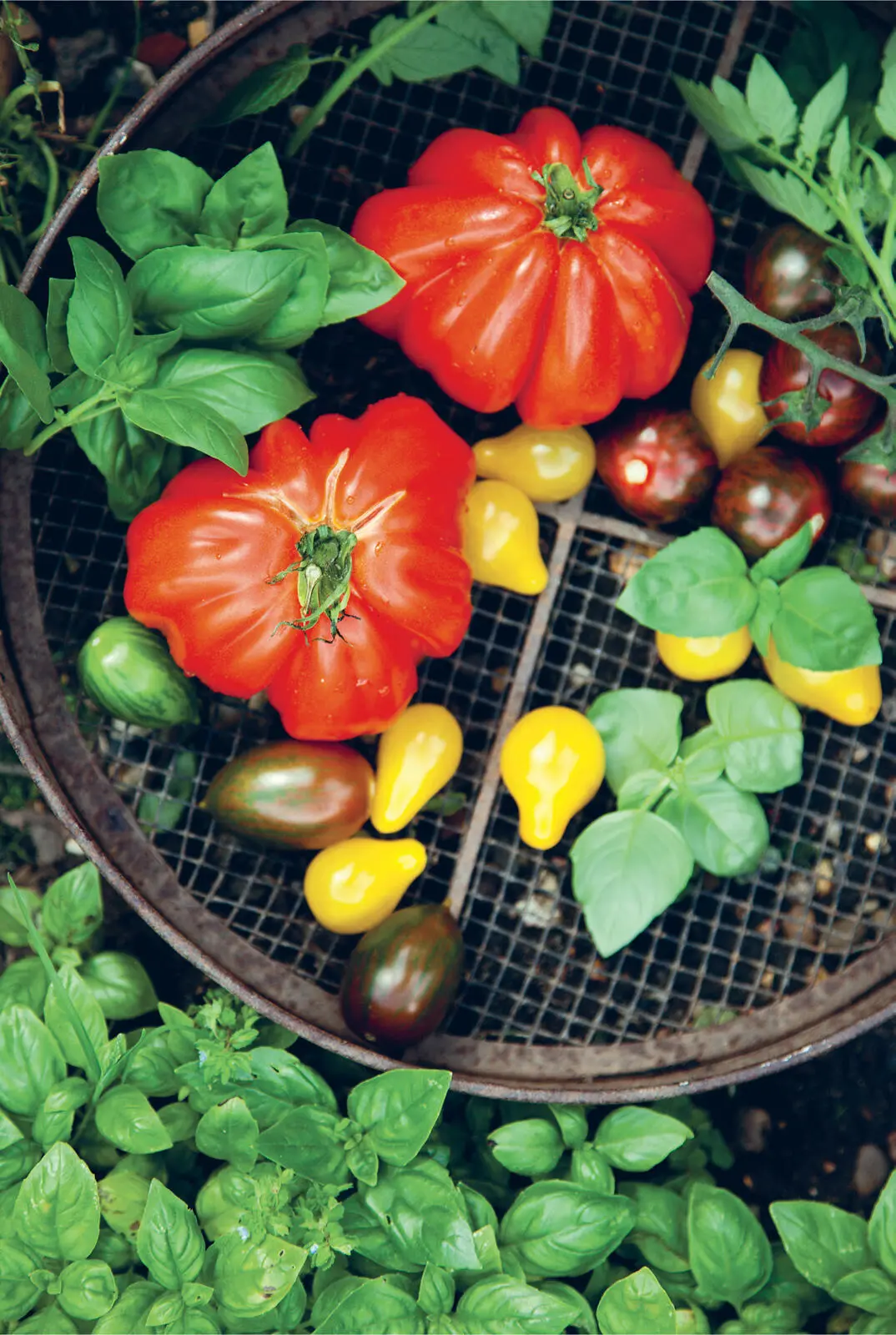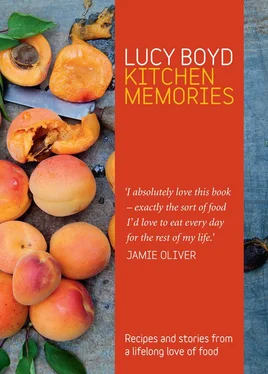salt and black pepper
150g plain flour
3 tbsp extra-virgin olive oil
6–8 tbsp water
pinch of salt
3 medium egg whites
To make the batter, sift the flour into a bowl and make a well in the middle. Stir in the extra-virgin olive oil and add the water a little at a time, stirring to make a smooth, creamy consistency, then cover with cling film and put in the fridge for half an hour.
Meanwhile, prepare the artichokes. Cut the end off each stem, leaving 1cm still attached to the bud. Pull away the tough outer leaves until you reach the tender yellow ones. Slice the top of the leaves off just above the heart. Pull the leaves apart slightly to reveal the hairy choke, then remove the choke with a spoon. Peel the stalk and trim off the tough bits around the base of the heart. Cut the artichokes lengthways through the stem into quarters, then put in a bowl of water with half a lemon and its juice to prevent them discolouring. Once they are all prepared, remove them from the water and pat dry on kitchen paper.
Drain the salted capers, rinse again and dry on kitchen paper.
When you are ready with the artichokes, capers and borage, pour enough sunflower oil into a large, heavy-based pan so that the oil comes to about 1cm or so up the sides of the pan, then heat to about 180ºC.
Back to the batter. Whip the egg whites until they are soft but can stand alone. Fold the egg whites into the flour and olive oil and water mixture and season with salt and pepper.
Dust the artichokes with flour seasoned with salt and pepper and shake off any excess. Put them into the hot oil and fry for about 4 minutes, turning them, until they start to turn golden and crisp at the edges. Remove with a slotted spoon onto kitchen paper.
Holding the borage by the stalk, sweep the buds and leaves through the batter, tap off any excess batter against the side of the bowl and then carefully place in the hot oil. Fry for a minute or so until golden and crisp, then using tongs turn the borage over and fry until golden on the other side. Remove with a slotted spoon onto kitchen paper.
Put the capers in a clean, dry metal sieve (it is important not to let any water near the oil) and lower into the hot oil. Let them sizzle for 1 minute, then remove onto kitchen paper.
Cut the remaining lemon into quarters. Put all the ingredients on a plate, sprinkle some salt and pepper over the top and serve immediately with the lemon quarters.

When I arrived at Petersham, I wanted to grow vegetables and salads that were difficult to obtain here and for Skye to use in the restaurant and Gael (Francesco’s wife) to cook with in her kitchen. I wanted to pick the male flowers from the courgettes when they first opened up in the morning to take to the kitchen, and to choose at what stage of growth to harvest the courgettes for eating raw when they are still relatively small and firm and delicate in flavour, without too many seeds and flesh, or to leave them on the plant for longer and allow their skins to thicken and the flesh to swell. These I use for grilling, as the moisture evaporates over the heat and condenses the flavour in the skin.
Rocket, the commercial varieties of which are so bland, is a delicious and incredibly versatile leaf used as either a herb or salad. The broad-leaved varieties are hard to find and the tastiest mainly sold in Middle Eastern stores, tied in bundles. I scattered a packet of seeds in some of the herb pots in my garden the other day and three days later they have already germinated and are showing signs of growth. Perhaps that is due to the warm week we have had this March.
All the chards are easy to grow here, despite the fact they are sold as specialist produce, along with cavolo nero, the black kale from Tuscany. I sow broad beans, peas, French and runner beans and borlotti beans (which are expensive to buy, that is, if you can find them). Start the borlottis off under glass in March to give them the long growing season they need, then plant them out in May for a September crop.
The most challenging Italian ingredient I attempted to grow was radicchio ‘Rosso di Treviso Tardivo’. Tying up the summer and autumn growth of leaves to ‘blanch’ the inner hearts was my inexperienced way of trying to figure out how to grow this specialist plant. It was successful to a degree in that during the winter I dared to untie the plant and peep at the leaves within: there were, huddled in the dark heart, beautiful cold-white spines dividing the dark wine-red leaf, crisp and dense and beginning to fold like a death at the tips.
Tomatoes: last year we grew an avenue of them in terracotta pots, tying the stems to string attached to the roof of the glasshouse. Francesco had instructed me to fill the glasshouses with them, so we did. He also suggested I ask his housekeeper for any old linen sheets we could tear up and use to wrap around the supports for the tomatoes as they grew. I did ask but got one of those ‘you must be insane’ looks. Varieties we grew included ‘Tigerella’, little yellow plum, ‘Gardener’s Delight’, ‘Bull’s Heart’ (‘Cuore di Bue’), ‘Black Russian’ and ‘Costoluto Fiorentino’. I love tomatoes, missing their wonderful flavours and aroma in the winter months.
PENNE CARBONARA WITH ASPARAGUS
I often make this on a Sunday night when eggs can be particularly soothing and I want to cook something simple but delicious. You can replace the asparagus with either peas, broad beans or courgettes. This is one of my favourite ways of eating asparagus.
1 bundle of fresh green English asparagus, about 350g, tough ends snapped off, washed
150ml double cream or g crème fraîche
6 good-quality fresh medium eggs, separated
about 30g Parmesan cheese, grated, plus extra to serve
extra-virgin olive oil
200g smoked streaky bacon or pancetta, cut into small pieces about 5mm thick
1 smallish sprig of fresh rosemary, leaves stripped from their stems, washed, dried and finely chopped
2 small dried chillies (bird’s eye chillies are good)
2 fat garlic cloves, peeled and finely chopped
500g penne rigate
salt and black pepper
Put a pan of water on to boil which is large enough for the penne to swell while cooking and salt the water.
Cut the asparagus at a sharp angle into slices about 5mm thick.
Put the cream or crème fraîche into a bowl, add the egg yolks and the Parmesan, then season with salt and pepper and stir to combine.
Heat a drizzle of extra-virgin olive oil in a heavy-based pan. Add the bacon or pancetta with the rosemary and crush the dried chillies in with your fingers. Just before the bacon starts to turn golden, add the garlic. Remove from the heat if you are worried the bacon is going too far, it will continue to cook for a minute or so.
Put the asparagus in a colander or sieve and blanch in the boiling water until just tender – about 3 minutes, then remove and add to the bacon in the pan and stir to combine the flavours.
Put the penne into the boiling water and cook for 10 minutes until al dente (with a little bite). Add the pasta to the bacon and asparagus and toss together, then pour the egg and cream mixture into the pasta – do this off the heat or you will end up with scrambled eggs.
Serve onto warm plates with a grating of fresh Parmesan – the grater held from above and quite high, and using long strokes over the finer grate, will produce the perfect texture – you don’t want dust.
Читать дальше













